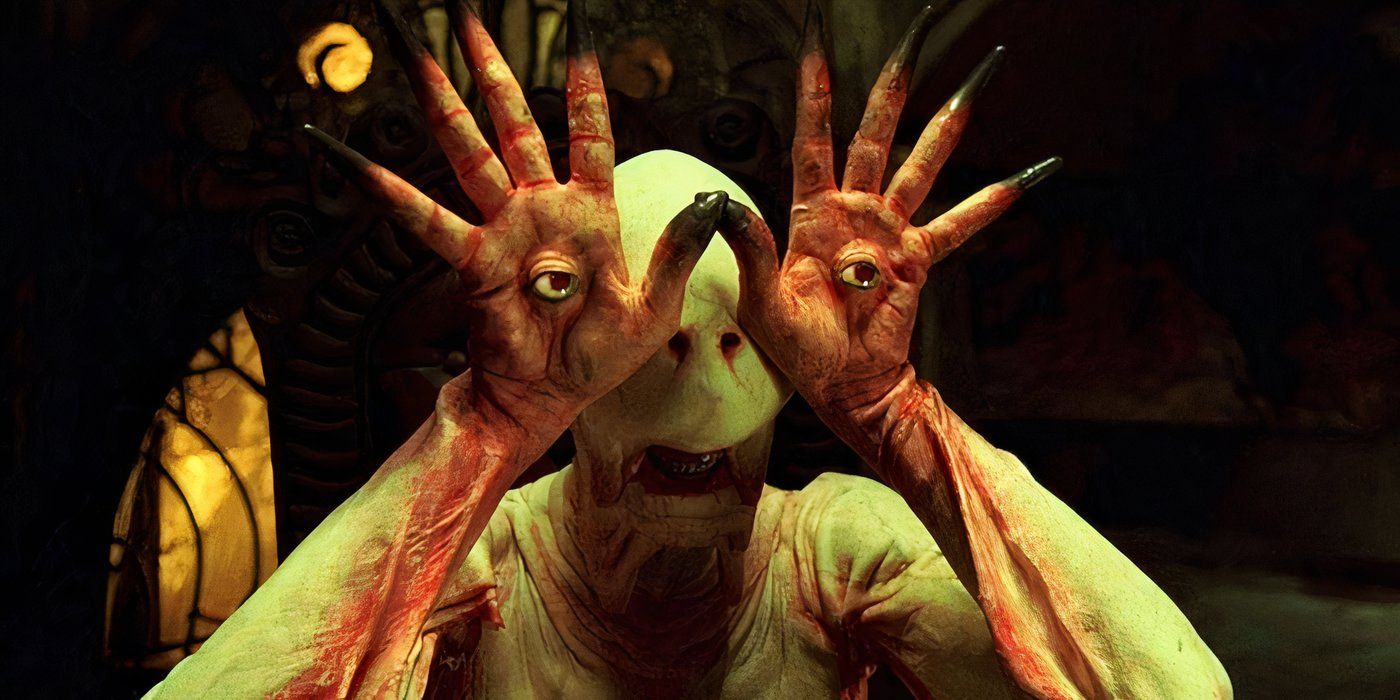These Are Hands Down the Best 5 Minutes in a Guillermo Del Toro Movie Ever and I’m Not Hearing Any Objections

Guillermo Del Toro is one of the best fantasy directors working today, and his award-winning 2006 dark fantasy war film, Pan’s Labyrinth, still stands as his magnum opus. Set shortly after the Spanish Civil War in the early years of the Francoist dictatorship, Pan’s Labyrinth draws from fairy tales and is, in part, a twisted take on Alice in Wonderland, combining fantasy with the brutality of war. After Pan’s Labyrinth, he went on to direct a number of other dark fantasy films, like Crimson Peak and the Best Picture winner The Shape of Water, but no scene epitomizes the best of Del Toro’s work quite like Ofelia’s (Ivana Baquero) introduction to the Pale Man (Doug Jones) in Pan’s Labyrinth, which even made Stephen King squirm. Just over five minutes long, the Pale Man scene highlights the film’s similarities to Alice in Wonderland, but Ofelia’s journey down the rabbit hole is downright horrifying and introduces us to one of the most iconic movie monsters of all time.
‘Pan’s Labyrinth’ Is an R-Rated Fairy Tale Set Against the Backdrop of World War II
Pan’s Labyrinth is structured like a typical hero’s journey through the eyes of 10-year-old Ofelia, whose belief in magic bleeds over into real life when she encounters the Faun (also played by Doug Jones), who believes her to be the reincarnation of Princess Moanna of the Underworld. While her mother suffers through a painful pregnancy and her new stepfather, Captain Vidal (Sergi López), treats her as a nuisance, Ofelia spends her days attempting to complete the three tasks the Faun assigns her so that she can earn immortality. Set in the summer of 1944, the film takes place against the backdrop of World War II, when Spain had already been taken over by dictator Francisco Franco, whose ideology is upheld by Captain Vidal. Explorations of fascism are common in Del Toro’s work, and Pan’s Labyrinth shows how human beings can be far scarier than fictional monsters, using its fantastical narrative as a parable that emphasizes the importance of questioning authority and standing up for what’s right, even in the face of danger.
The Pale Man Scene in ‘Pan’s Labyrinth’ Is Peak Guillermo Del Toro
Though Pan’s Labyrinth draws inspiration from several different works, from fairy tales to the art of Francisco Goya, the film’s most iconic scene begins quite similarly to a famous scene from Alice in Wonderland. To complete the second task given to her by the Faun, Ofelia uses a magic piece of chalk to draw a door that opens into the Pale Man’s lair, instructed to retrieve a dagger that the Faun uses later on in the film. Unsure of what she will find there, when Ofelia descends into the cellar, she sees a long table full of delicious-looking food, but instead of the Mad Hatter, the Pale Man is seated motionless at the head of the table. Del Toro first uses silence to build suspense, with the film’s haunting score, composed by Javier Navarrete, fading away as Ofelia explores the cellar, and the sounds of her breath and the crackling fire are heightened. Creepy illustrations and a pile of discarded shoes establish the Pale Man as a child-eating monster, and Ofelia is careful not to disturb him as she searches for the dagger. On her way out, however, she can’t resist the sight of the juicy grapes glistening on the table, and, despite being explicitly told not to, she takes a bite, immediately awakening the Pale Man.
The great Doug Jones, a frequent collaborator of Del Toro’s, plays both the Faun and the Pale Man, and his transformation, thanks to some jaw-dropping (and Oscar-winning) special effects make-up, is a sight to behold. It’s chilling to watch the Pale Man come alive, placing his red eyes into the palms of his hands, stumbling around the cellar, and violently ripping the heads off of the fairies who were guiding Ofelia. Serving as a major turning point in the film, this five-minute scene is peak Del Toro, and Jones is utterly terrifying as the Pale Man, who became the lasting image of the film despite appearing for such a short amount of time.






